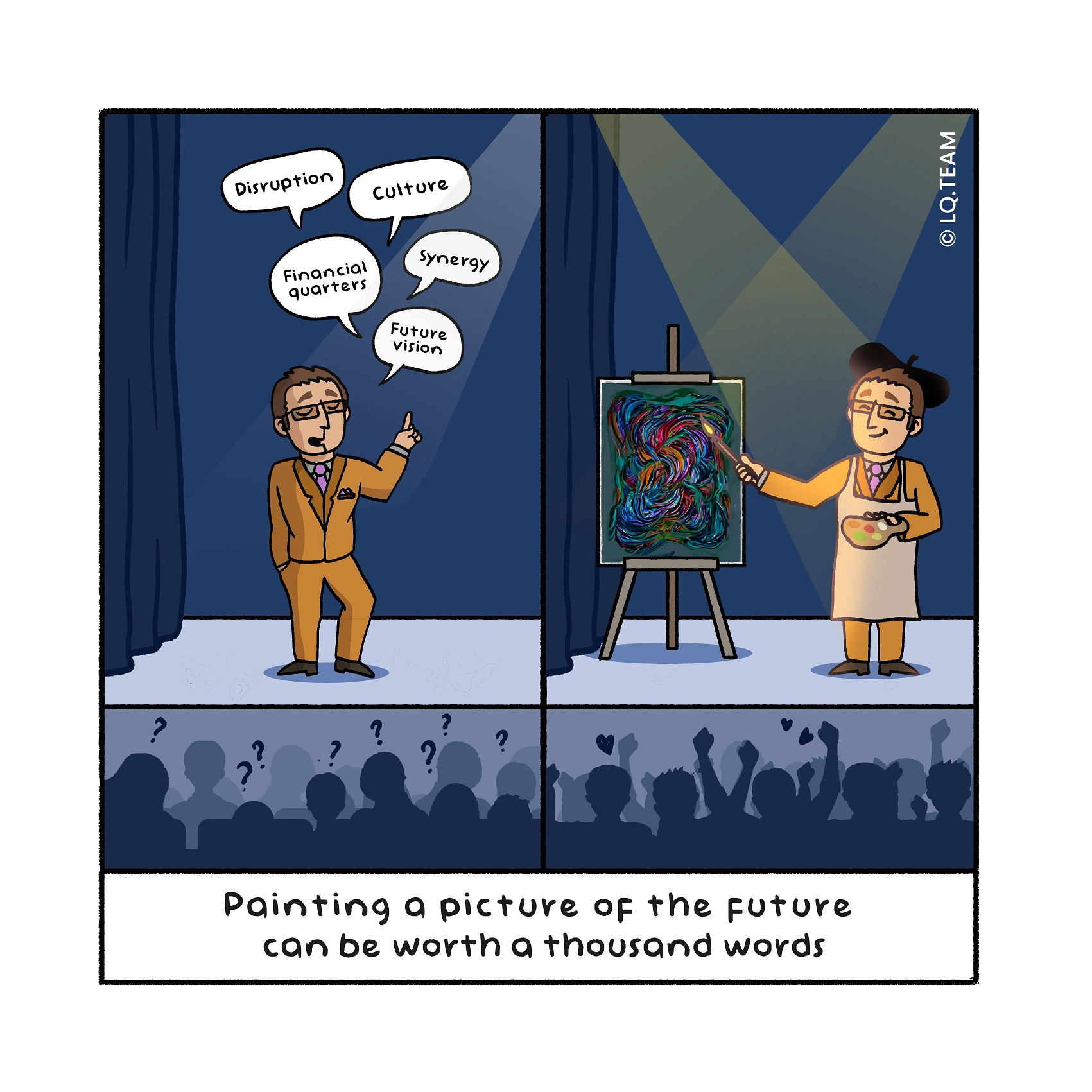
Nut to crack: How do you clarify what the future will bring and how it differs from today?
The level of uncertainty, complexity and ambiguity we experience in our work differs by sector and the type of company we work in. Technological and environmental developments certainly enhance the feeling of chaos and un- predictability. This feeling also tends to occur during organisational transfor- mations, particularly those of a more innovative nature. The future will remain unclear for a certain period while the change is being carried out, and with it comes uncertainty.
How can you make that elusive future more tangible?
How can you create a perspective that people can imagine and hold on to? What if you don’t yet have the final picture clear?
Nutcracker: Drawing a picture
A picture is worth a thousand words. Visioning is a technique that helps us draw a picture of what we don’t yet know. You can define the desired situation resulting from the transformation by drawing on the group’s collective imag- ination. Suppose you have built a strong case for change, and the leaders can communicate the story well. In that case, it can be helpful to engage the larger group of managers or employees in creating a picture of the desired future after the transformation is completed. The following example illustrates this.
Real-life example: Visualise the future
The turnover and profit of a successful retailer have been growing faster than the mar ket for the past five years. Yet Theo, the director and owner, sees persistent internal behaviours blocking further growth. He sees an insufficient focus on results and almost zero crossfunctional improvement initiatives. Everyone is occupied with daytoday issues while the outside world is changing radically. How can he make it clear to his leadership team of 25 how he wants them to operate and how this differs from what they currently do?
- Together with two management team members, Theo holds interviews with the lea dership group. In these interviews, they ask the following questions:
- Describe the company the way it is now: how do you see it? What has helped us grow, and what is keeping us from further growth?
- Describe how you want the company to look in five How does this differ from today? What would make you proud?
- What is the underlying cause that prevents this from materialising? Which steps do you think are needed to get there?
Instead of summarising the interviews, Theo hires a visual storyteller to attend the feed back session and to draw an image representing what he hears from Theo and his colleagues when they report to the leaders.
After the initial sketch drawn up by the visual storyteller, the entire team of 25 worked together to create the final image. This results in one graphic representing the current and the desired situation and the most critical steps needed to get there. This visual is the mental image each leadership team member uses to lead their part of the trans formation journey. They also use the image to convey the necessity and the impact on others within their teams.
Tip for change leader and enabler
Visual storytelling in a business environment has been gaining popularity. The power behind visual storytelling is as much in the final image itself as in the creation process with the entire team.
Make sure to take enough time to involve critical stakeholders in the creation process.
Kernel: Visualise the invisible
A sense of purpose and direction fuels the transformation journey. Even when you are not yet clear on the destination, spend time with your direct reports to envisage the future. Jointly create the image of what success looks like and what it takes to get there. Visualise the invisible to mobilise for success.
